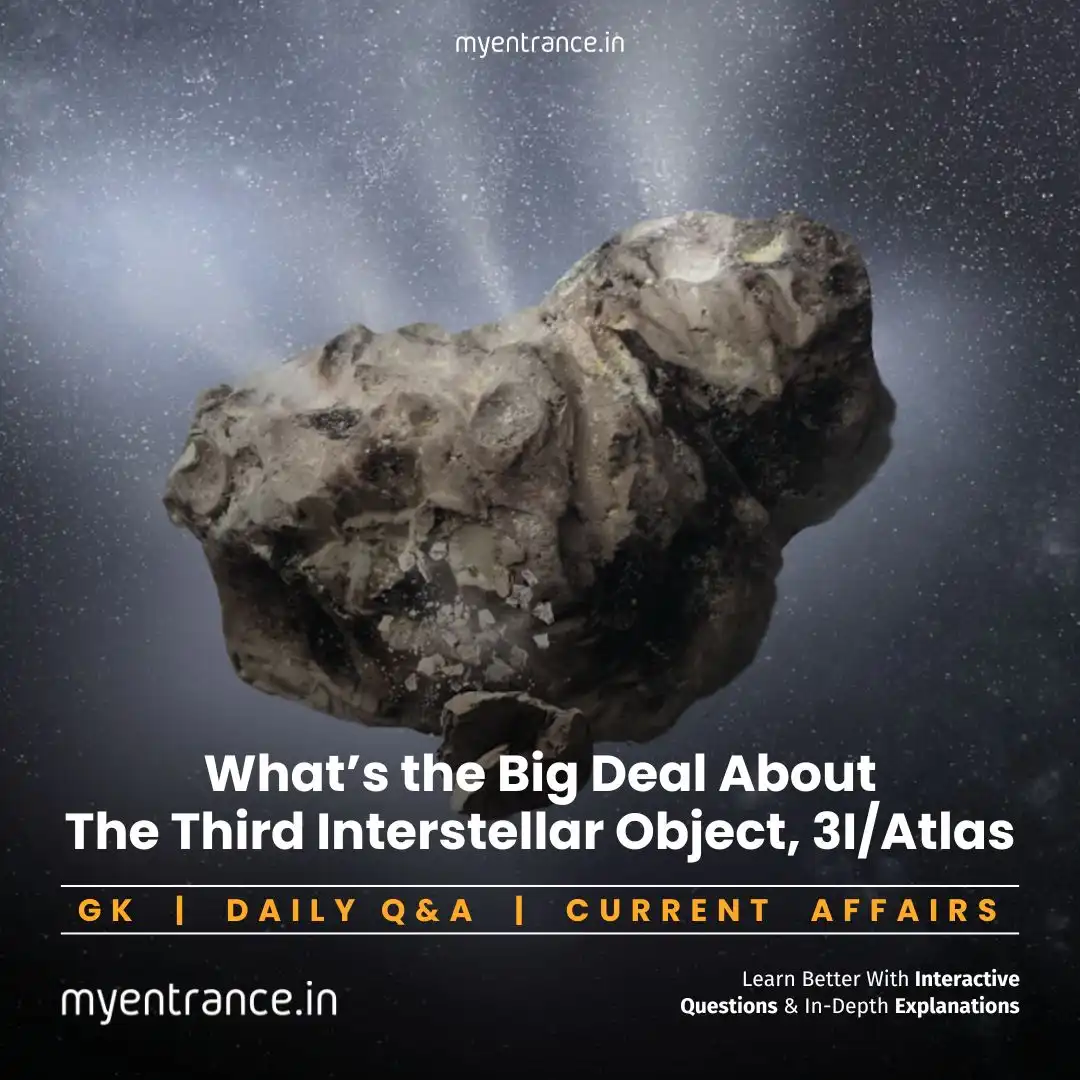Select Language
3I/Atlas: The Third Visitor from Beyond Our Solar System – What Does It Mean?
In an exciting astronomical breakthrough, scientists have confirmed the third-ever interstellar object, named 3I/Atlas, speeding through our solar system. Unlike typical comets or asteroids, this mysterious traveler comes from another star system, offering a rare glimpse into the cosmos beyond the Sun’s influence.

What Makes 3I/Atlas Special?
Third of Its Kind: After ‘Oumuamua (2017) and 2I/Borisov (2019), this is only the third confirmed interstellar visitor.
Hyperbolic Orbit: Moving at extreme speeds, it follows a highly eccentric path, unlike anything in our solar system.
Comet-Like Features: Observations reveal a small coma (gas cloud) and a short tail, suggesting it’s an interstellar comet.
No Close Approach: Unlike Borisov, it won’t come closer to the Sun than Mars, making its study even more challenging.
Why Are Interstellar Objects So Rare and Important?
Extremely Hard to Detect: Their high speed and brief visibility window make them elusive.
Cosmic Messengers: They carry chemical signatures from other star systems, helping scientists study alien planetary formations.
Planetary Defense Significance: Tracking such objects improves our ability to predict and defend against potential cosmic threats.
Why Is This Important for Competitive Exams?
Questions on recent scientific discoveries, space missions, and interstellar objects frequently appear in:
✔ SSC & PSC (General Science Sections)
✔ NID/NIFT/FDDI (General Knowledge & Design Aptitude)
✔ UPSC & State PSCs (Science & Technology Current Affairs)
Understanding such breakthroughs helps in essay writing, MCQs, and interviews where space science is a hot topic.
Sample Questions & Answers for Exam Prep
1. What is the name of the third confirmed interstellar object?
Ans: 3I/Atlas
2. How does 3I/Atlas differ from typical solar system comets?
Ans: It has a hyperbolic orbit (eccentricity of 6), meaning it’s not bound by the Sun’s gravity and came from another star system.
3. Which two interstellar objects were discovered before 3I/Atlas?
Ans: ‘Oumuamua (2017) and 2I/Borisov (2019)
4. Why are interstellar objects difficult to detect?
Ans: They move extremely fast and are visible for only a short time before leaving the solar system.
5. How do interstellar objects help scientists?
Ans: They provide direct samples of material from other star systems, helping us understand cosmic chemistry and planetary formation.
Final Thoughts
The discovery of 3I/Atlas is not just a win for astronomers but also a goldmine for exam aspirants. Keeping up with such cutting-edge science can give you an edge in competitive exams where current affairs and general science play a huge role.
Get 3 Months Free Access for SSC, PSC, NIFT & NID
Boost your exam prep!
Use offer code WELCOME28 to get 3 months free subscription. Start preparing today!















